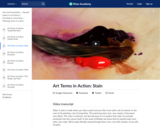
Created by The Museum of Modern Art.
- Subject:
- Art History
- Arts and Humanities
- Material Type:
- Lesson
- Provider:
- Khan Academy
- Provider Set:
- Museum of Modern Art
- Author:
- Museum of Modern Art
- Date Added:
- 07/29/2021

Created by The Museum of Modern Art.
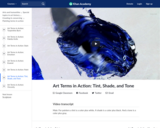
Created by The Museum of Modern Art.
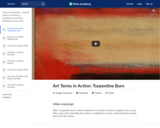
Abstract Expressionist New York.
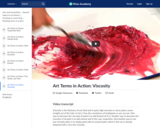
Created by The Museum of Modern Art.
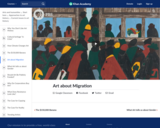
Migration is central to human experience, and art history reflects that.
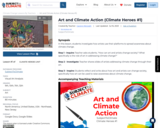
SYNOPSIS: In this lesson, students investigate how artists use their platforms to spread awareness about climate change.
SCIENTIST NOTES: This lesson encourages students to think about how artists and their art can be used to teach and inspire others about climate change. Many videos are included in the slideshow. Videos include one of Sarah Lewis, an art historian discussing how one person’s artwork can shift things, and a second one featuring “Earthrise,” a poem by Amanda Gorman, the youngest inaugural poet in U.S. history. There are an additional six videos covering artists and their artwork about climate change. This lesson finishes with great reflection questions and an opportunity for class discussion. This would be a great lesson for teaching the effects of art on the public perception of climate change.
POSITIVES:
-Students consider the role of art as a form of climate activism.
-Students are exposed to a variety of artists and types of art addressing climate change.
-This lesson has significant cross-curricular possibilities, even though it focuses on art and artists.
-Students begin to think about ways they might use artwork as a means of taking climate action.
ADDITIONAL PREREQUISITES:
-This is lesson 1 of 3 in our 9th-12th grade Climate Heroes unit.
-This lesson should follow a basic introduction to climate change science, exploration of global and local impacts, and climate change solutions.
-Some prior knowledge of contemporary art practices is useful, but not required.
DIFFERENTIATION:
-Teachers can provide instruction multimodally.
-Teachers can modify the assignment and assessment as needed.
-Teachers can follow up with questions to ensure comprehension.
-Teachers can pair students with helpful peers.
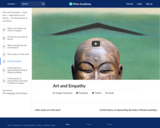
Empathy is a term we hear a lot, but what does it mean and how does it work? Looking back through art history, we find many moments when art has allowed us to share in the feelings of others, from Maya Lin's Vietnam Veterans Memorial, to representations of the Buddhist deity Jizō Bosatsu, along with the Röttgen Pietà, Guáman Poma's First New Chronicle and Good Government, the ink drawings of Chittaprosad and Zainul Abedin, the work of Ghana Think Tank, and more.
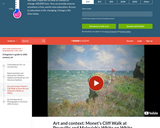
Art & Context: Monet's Cliff Walk at Pourville & Malevich's Suprematist Composition: White on White A conversation with Sal Khan, Steven Zucker & Beth Harris. Created by Beth Harris, Steven Zucker, and Sal Khan.

Marcel Duchamp, In Advance of the Broken Arm, 1964 (fourth version, after lost original of November 1915) (MoMA). A conversation with Sal Khan & Steven Zucker. Created by Beth Harris, Steven Zucker, and Sal Khan.
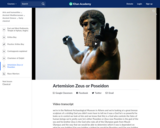
Artemision Zeus or Poseidon, c. 460 B.C.E., bronze, 2.09 m high, Early Classical (Severe Style), recovered from a shipwreck off Cape Artemision, Greece in 1928 (National Archaeological Museum, Athens). Speakers: Dr. Beth Harris and Dr. Steven Zucker. Created by Steven Zucker and Beth Harris.
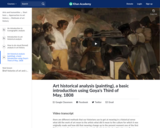
Francisco de Goya, Third of May, 1808, 1814, oil on canvas, 266 x 345.1 cm (Museo del Prado. Madrid). Created by Beth Harris and Steven Zucker.
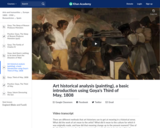
Francisco de Goya, Third of May, 1808, 1814, oil on canvas, 266 x 345.1 cm (Museo del Prado. Madrid). Created by Beth Harris and Steven Zucker.
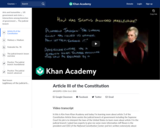
A deep dive into Article III of the Constitution, which establishes the judicial branch of the government, including the Supreme Court. In this video, Kim discusses Article III with scholars Richard Garnett and Jeffrey Rosen.
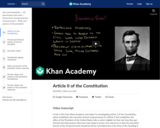
A deep dive into Article II of the US Constitution, which establishes the powers of the president. In this video, Kim discusses Article II with scholars Michael Gerhardt and Sai Prakash.
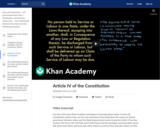
A deep dive into Article IV of the Constitution, which lays out how federalism, the system of shared governance between states and the federal government, works in practice. In this video, Kim discusses Article IV with scholars Gabriel Chin and Erin Hawley.
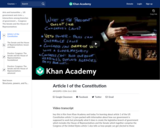
A deep dive into Article I of the US Constitution, which describes the roles and powers of Congress. In this video, Kim discusses Article I with scholars Heather Gerken and Ilya Somin.
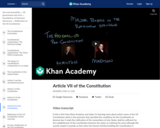
A deep dive into Article VII, which established the conditions for the ratification of the US Constitution. In this video, Kim discusses Article VII with scholars Mark Graber and Michael Rappaport.
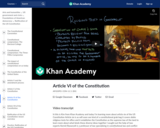
A deep dive into Article VI, which acts as the "glue" of the Constitution, holding together the new United States through a shared commitment to the Constitution's principles. In this video, Kim discusses Article VI with scholars Michael Ramsey and Kermit Roosevelt.
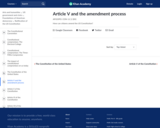
A deep dive into Article V of the US Constitution, which establishes the amendment process. In this video, Kim discusses Article V with scholars Michael Rappaport and David Strauss.